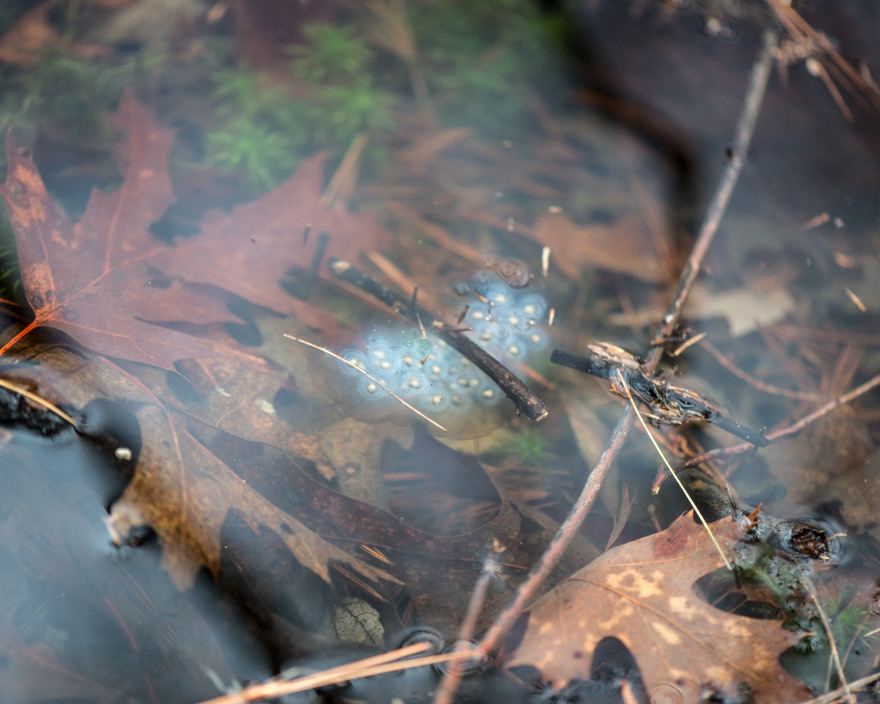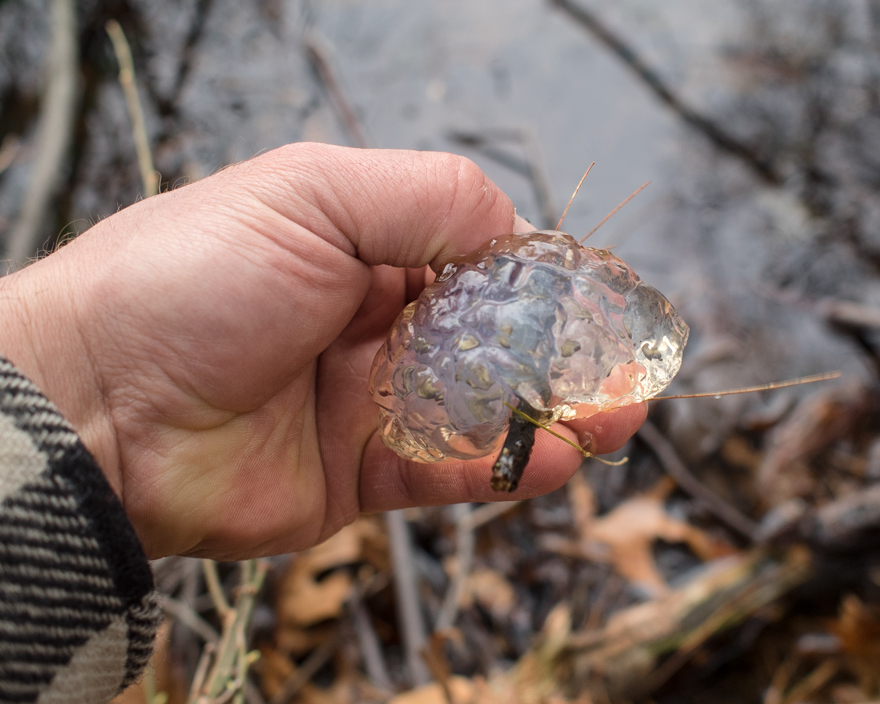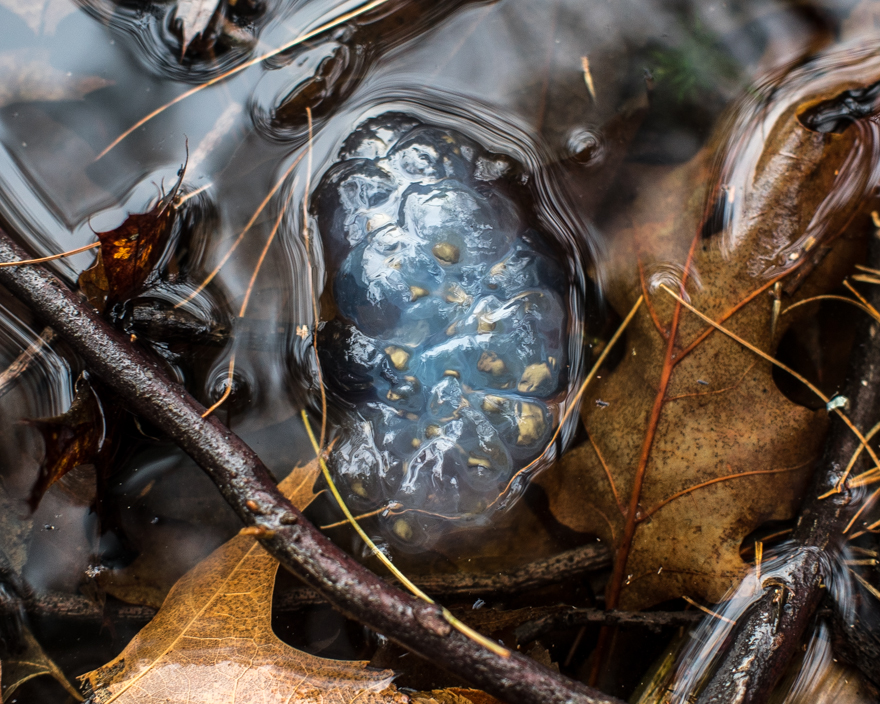Last night, Musti, Luc, and I set out to find wood frog eggs. We headed for the little pond south of Chickatawbut Hill where we’d encountered enormous numbers of wood frogs two weeks earlier. The only catch was that I’d never seen a frog egg before. Friends of mine, hearing about my interest in the frogs told me, “You’ve gotta check out the egg masses! They’re really cool looking, and there should be tons of them in that pond. You can’t miss them!” So armed with this encouragement (and a few minutes with Google Images), we went looking.
It’s a funny thing looking for something that should be present, yet not really knowing what you’re looking for. Am I not finding it because it’s not there, or because I’m not looking the right way? This exercise in disproving the negative is one of my favorite games, whether the quarry is a rare orchid, a secretive warbler, or masses of blindingly obvious frog eggs. I looked, but nothing suggestive of an egg mass was presenting itself. The pond is in a steep, rocky bowl surrounded by a dense tangle of greenbriar canes (Smilax rotundifolia), so walking near the edge to scan the water was a little challenging; I kept losing my hat to the thorns as I pushed my way through.*
The frog gods only tested me for 45 minutes.

Turns out they are fairly obvious if you’re looking carefully. The egg mass appears as an opalescent, almost glowing object just below the surface of the water. This one was adhered to a small stick.


I’m still curious about the seeming scarcity of the eggs. I searched about half of the perimeter of the pond and only found one mass. I’m not sure if they are more abundant in areas I didn’t search, if they’re concentrated toward the center of the pond, if my timing was off (early or late), or if the frogs were not so productive this year. I’ll keep checking back, for more eggs or for tadpoles
*Greenbriar’s growth pattern leaves lots of voids within about two feet of the ground, so Musti and Luc’s passage through the area was much easier than mine. I wonder if this is a coincidence, or if the plant has evolved to exclude larger animals like the white-tailed deer (Odocoileus virginianus) that are very common in this area.
Tagged: amphibians, Blue Hills Reservation, Chickatawbut, frog eggs, spring, Wood frog